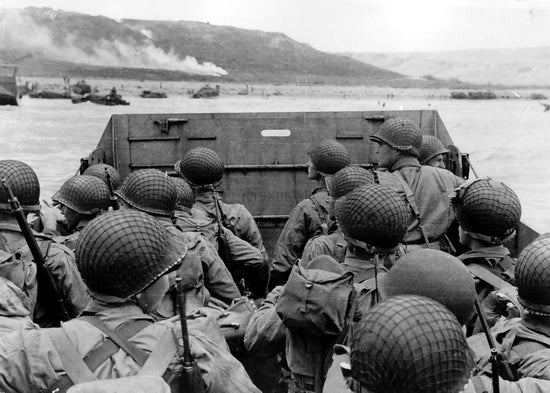World War II: Economic Stimulant or Depressant?
David Weinberger /
Did World War II spending boost economic growth? Although some statistics appear to affirm this, wiser historical analysis demonstrates that artificial increases in output during the war masked a debilitated private economy. Meaningful growth increased after the war, when free-market mechanisms returned and marginal tax rates were reduced.
Gross national product (GNP), the total value of everything produced by United States domestically or abroad, did increase during the war and trended downward as the war ended in 1945, falling considerably in 1946 and 1947.
It would be shallow analysis, however, to conclude that therefore war spending increased economic growth. Other factors must be considered.
The war neatly divided the economic world into two parts: one that stemmed solely from the demands of government and the other, more familiar part that met the needs of everyday consumers and businesses. Underneath the national numbers that seem so robust between 1941 and 1945 stood an emaciated, barely conscious private economy stripped of resources and hope. This economy, a child of the Great Depression, bore little resemblance to its muscular cousin who fought on two war fronts.
Unfortunately, some of today’s analysts totally forget this “Jekyll and Hyde” economic world. They celebrate the war years as the triumph of public-sector spending and as proof that government can lead us out of recession by opening up its purse.
However, saying that spending increased output while ignoring production demands of war would be like saying that chemotherapy makes people healthy regardless of who receives it. But that ignores that chemotherapy should only be administered if someone with cancer has a real need for it. Administering chemotherapy to healthy individuals would likely adversely affect their health. Likewise, government should spend only when there’s a real need for it, and arbitrary spending adversely affects economic health.
In the case of World War II, we had a national security need. Demand priorities shifted production toward that government function.
This distinction is crucial. Today’s government spending advocates cannot point to real demand priorities like World War II. Instead, stimulus packages consist of mostly arbitrary spending initiatives sloppily designed by politicians with no consideration of genuine demand.
This brings us back to considering how war production affected the private economy.
What economic value did tanks, planes and other war machines provide, other than their purpose to win the war? Put another way, building fleets of battleships and proceeding to blow them all up in the ocean increases GNP, but is that really a wise use of economic resources? Does it raise living standards or improve anyone’s day-to-day life?
It would be one thing if government had an unlimited supply of resources such as money, raw materials, factories, and labor to build war machines—and if inflation were not an economic reality. If that were the case, war production would have almost no adverse consequences on the private economy.
But government has no unlimited supply. It has only the resources the private sector creates. During World War II, gasoline, milk, cheese, meats, metals, and scores of other products were rationed at home and redirected toward the war production and troops, leaving the private sector deprived and enfeebled. Would anyone describe such a society as prosperous?
Accounting for such realities and correcting for wartime inflation, Simon Kuznets calculated GNP to more realistically reflect World War II production. Resources were freed up and redeployed toward more valuable economic uses after the war. Consequently, according to Kuznets, GNP actually increased after the war years, by 8 percent in 1946, and even more in the following three years.
Robert Higgs notes a similar trend in private investment:
From 1941 to 1943, real gross private domestic investment plunged by 64 percent; during the four years of the war, it never rose above 55 percent of its 1941 level [and] only in 1946 did it reach a new high.
Tellingly, as the war wound down, stalwart Keynesian Alvin Hansen, voicing the conventional wisdom at the time, proclaimed, “The government cannot just disband the Army, close down munitions factories, stop building ships, and remove all economic controls.” Doing so, it was thought, would bring the depression’s return.
That prediction was unfounded. Once the war ended, spending fell, marginal tax rates were reduced, and market forces returned. The economy didn’t hesitate to respond.
Historian Burt Folsom notes that, following tax cuts on individual income and corporate “excess profits” in 1945, “a revived economy was generating more annual federal revenue than the U.S. had received during the war years, when tax rates were higher. Price controls from the war were also eliminated by the end of 1946. The U.S. began running budget surpluses.”
Overwhelming evidence indicates that World War II only artificially increased output, while the private economy was left in the doldrums. Once the economic realities of war are accounted for, compelling evidence suggests that economic growth increased following the war’s conclusion and the return of market forces. The lesson today is as clear as history is undeniable: Government spending never works to grow an economy.

